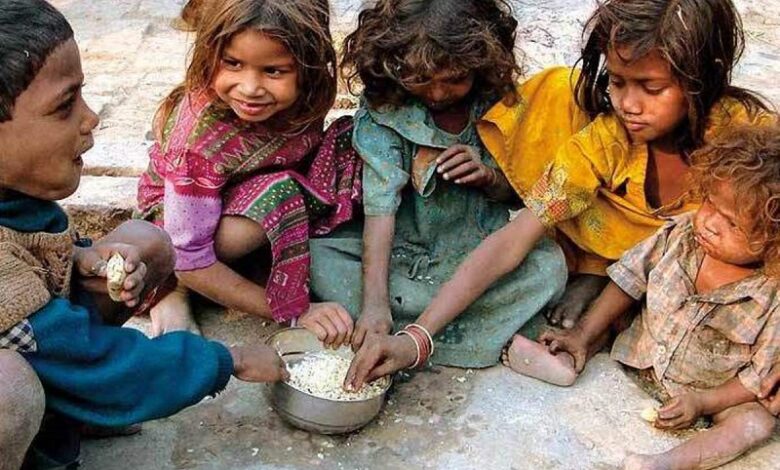India Makes Historic Strides: 13.5 Crore Individuals Escape Multidimensional Poverty

A groundbreaking report by the NITI Aayog, titled “National Multidimensional Poverty Index: A Progress Review 2023,” reveals that a record-breaking 13.5 crore individuals have transitioned out of multidimensional poverty in India between 2015-16 and 2019-21. The report was unveiled by Shri Suman Bery, Vice-Chairman of NITI Aayog, in the presence of esteemed members Dr. V K. Paul, Dr. Arvind Virmani, and CEO Shri B. V. R. Subrahmanyam.
This second edition of the National Multidimensional Poverty Index (MPI) draws from the latest National Family Health Survey (NFHS-5, 2019-21) and assesses India’s progress in reducing multidimensional poverty based on the surveys conducted during NFHS-4 (2015-16) and NFHS-5 (2019-21). The methodology employed aligns with global standards and builds upon the Baseline Report of India’s National MPI launched in November 2021.
The National MPI evaluates various dimensions, including health, education, and standard of living, with equal weightage assigned to each. Twelve indicators aligned with the Sustainable Development Goals (SDGs) are used to measure deprivations in areas such as nutrition, child and adolescent mortality, maternal health, education, access to basic amenities, and financial inclusion. Encouragingly, significant improvements have been observed across all 12 indicators.
The report highlights a remarkable decline of 9.89 percentage points in India’s multidimensional poverty, reducing it from 24.85% in 2015-16 to 14.96% in 2019-2021. Rural areas have witnessed the most substantial decline, with poverty rates decreasing from 32.59% to 19.28%. Meanwhile, urban areas also experienced a reduction, from 8.65% to 5.27%. Uttar Pradesh stands out with the largest number of people (3.43 crore) escaping multidimensional poverty. The report provides multidimensional poverty estimates for all 36 states and union territories, as well as 707 administrative districts. Among the states, Uttar Pradesh, Bihar, Madhya Pradesh, Odisha, and Rajasthan have shown the fastest reduction in the proportion of multidimensional poverty.
Over the same period, the MPI value has nearly halved from 0.117 to 0.066, and the intensity of poverty has decreased from 47% to 44%. These significant achievements put India on track to achieve SDG Target 1.2 of reducing multidimensional poverty by at least half well ahead of the 2030 deadline. They demonstrate the government’s strategic focus on sustainable and equitable development, fulfilling its commitment to the SDGs and eradicating poverty.
The Indian government’s dedicated efforts to improve access to sanitation, nutrition, cooking fuel, financial inclusion, drinking water, and electricity have played a crucial role in these advancements. All 12 parameters of the MPI have shown notable improvements. Flagship programs like Poshan Abhiyan (nutrition campaign) and Anaemia Mukt Bharat (anaemia-free India) have contributed to reduced health deprivations. Initiatives such as the Swachh Bharat Mission (Clean India Mission) and Jal Jeevan Mission (Water for All Mission) have significantly enhanced sanitation coverage across the nation. The Pradhan Mantri Ujjwala Yojana (PMUY), which provides subsidized cooking fuel, has brought about a transformative impact, resulting in a 14.6 percentage point improvement in cooking fuel deprivations. Programs like Saubhagya (electricity access for all), Pradhan Mantri Awas Yojana (housing for all), Pradhan Mantri Jan Dhan Yojana (financial inclusion), and Samagra Shiksha (inclusive education) have also played vital roles in reducing multidimensional poverty.
The remarkable progress achieved, particularly in areas such as electricity, access to bank accounts, and drinking water, reflects the government’s unwavering commitment to improving citizens’ lives and creating a brighter future for all. Consistent implementation across a diverse range of programs and initiatives, which exhibit strong interlinkages, has led to significant reductions in deprivations across multiple indicators.With millions of individuals transitioning out of poverty, the country is making significant strides towards achieving the SDGs. The government’s targeted initiatives in areas such as health, sanitation, education, and financial inclusion have played a pivotal role in this positive transformation.
News Mania Desk/Agnibeena Ghosh , 17 July 2023






